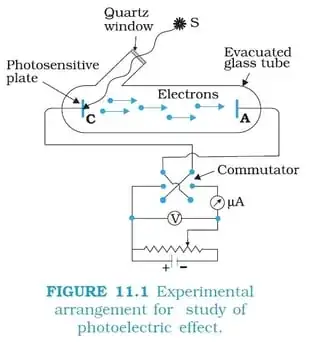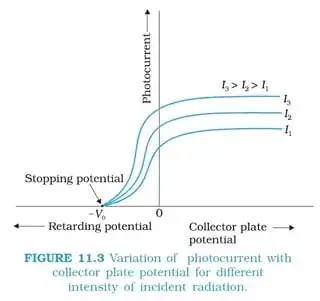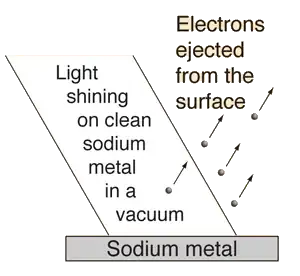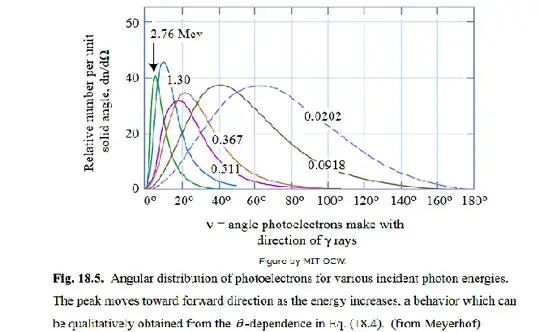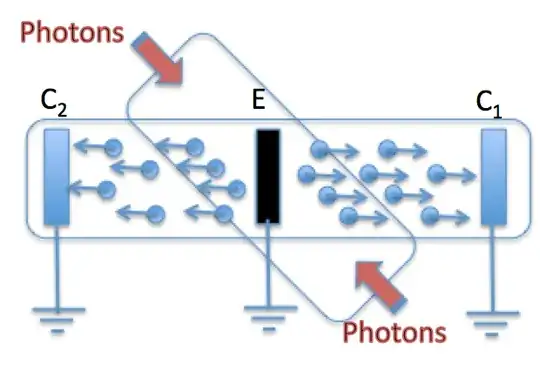Consider a Photoelectric effect experiment apparatus as shown in Figure 11.1
The variation of photocurrent with the voltage applied across $\mathrm{A}$ and $\mathrm{C}$ is as shown in Figure 11.3.
My question –
Why is the current non-zero even if the voltage is zero?
Consider a situation in which the voltage across the plates is zero. Photons of sufficient frequency strike the outermost surface of the cathode, emitter plate $\mathrm{C}$. Electrons become free from the attraction of nucleus as their net energy becomes positive.
Why I think that there should be no net current?
As soon as photons strike the outermost surface of the cathode(assumed to be $1$ to $10$ atomic diameters thick), electrons become free. Now, as the electrons have kinetic energy, they'll come out of that outermost surface. Now, the electrons(with kinetic energy) should have an equal probability of going in every direction of the surface. So, around half of the electrons should go in the right direction towards the anode and strike it and half should go to the left, trying to penetrate the inner surfaces of the cathode plate.
Now, the electrons which will go to the right will face some field due to the space charge present in the tube but nevertheless, some electrons will definitely reach the anode plate. After they strike with the anode plate, they'll face some resistance but still, some electrons will reach the low resistance copper wires connected to the anode plate and milliammeter.
Now, consider the electrons which go towards left. They'll definitely face resistance from cathode plate but some will still reach the copper wire.
Now, as there is no potential difference applied between $\mathrm{A}$ and $\mathrm{C}$, there is no need of commutator and voltmeter. So, the ammeter is connected in series with the anode plates and cathode plates with copper wires.
Now, if there is steady state current in the circuit, electrons emitted to any one of the sides should dominate over the other. But the number of electrons emitted on both the sides is same, and all the electrons should face the same resistance as the current(electrons) should flow in a closed loop. But if the number and velocity of electrons coming from both the sides are same, there should be no net current. But there is. Why?
Edit –
From the answers of anna v and mmainville, it can be seen that the emission of electrons is dependent on the angle of emission of light. But still, the question remains. If the electrons emitted towards anode have enough energy to complete the circuit and again reach the holes in cathode despite the resistance in between, the electrons emitted to the left should have enough energy to come to anode plate via copper wires and again get ejected through anode plate by the virtue of their kinetic energy and reach the cathode plate. In this case too, the current should be zero which is not true. Why?
